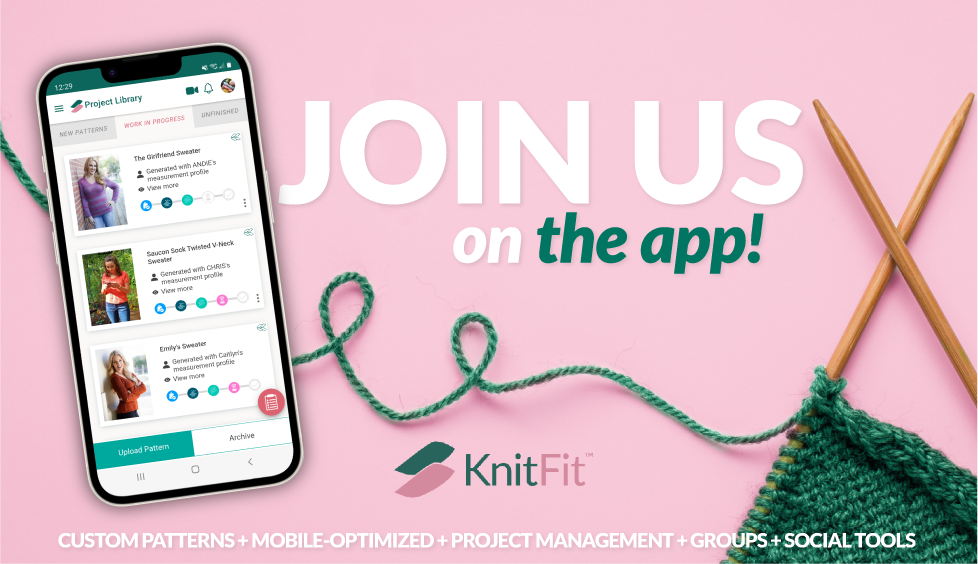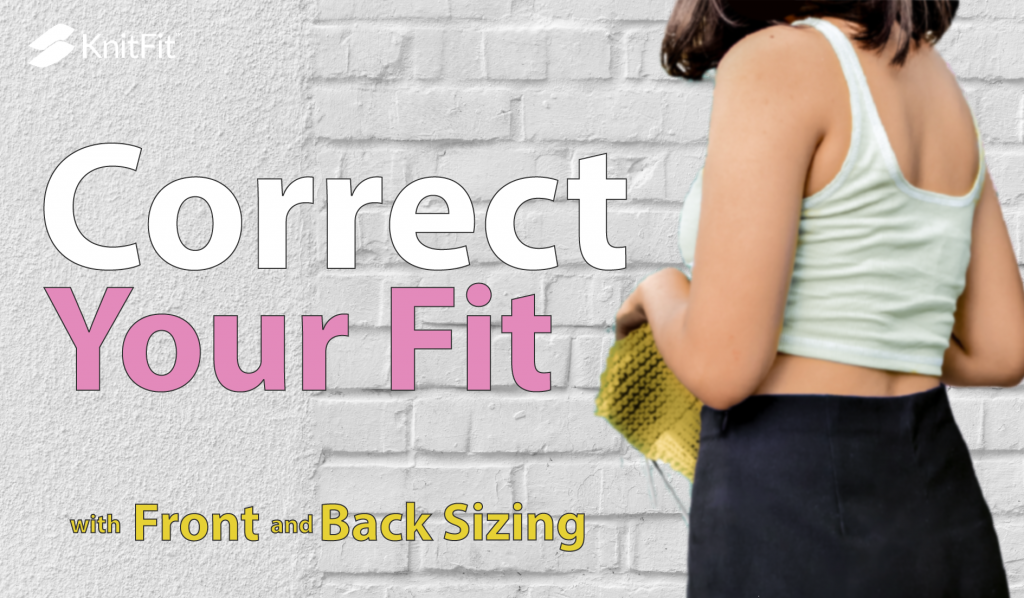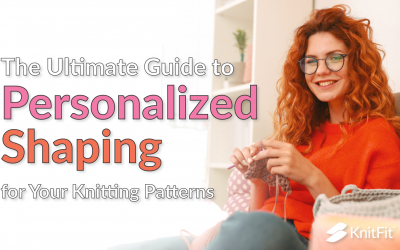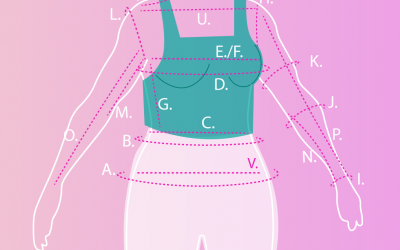Correct Your Fit with Front and Back Sizing
Have you ever noticed that you need more fabric in the front of a garment than the back? Maybe you knit your size, but when you tried on your finished garment, you noticed one of these signs: extra fabric in the back, tightness across the bust, or tightness in the armholes. These fit problems can occur for anyone, but with seventy percent of knitters being women according to a post by The Creatives Hour, it’s no wonder that considering the bust, more fabric is often needed in front than back.
If you haven’t yet read our post, The Ultimate Guide to Personalized Shaping for Your Knitting Patterns, please do so as it will deepen your understanding of what we’re about to explore.
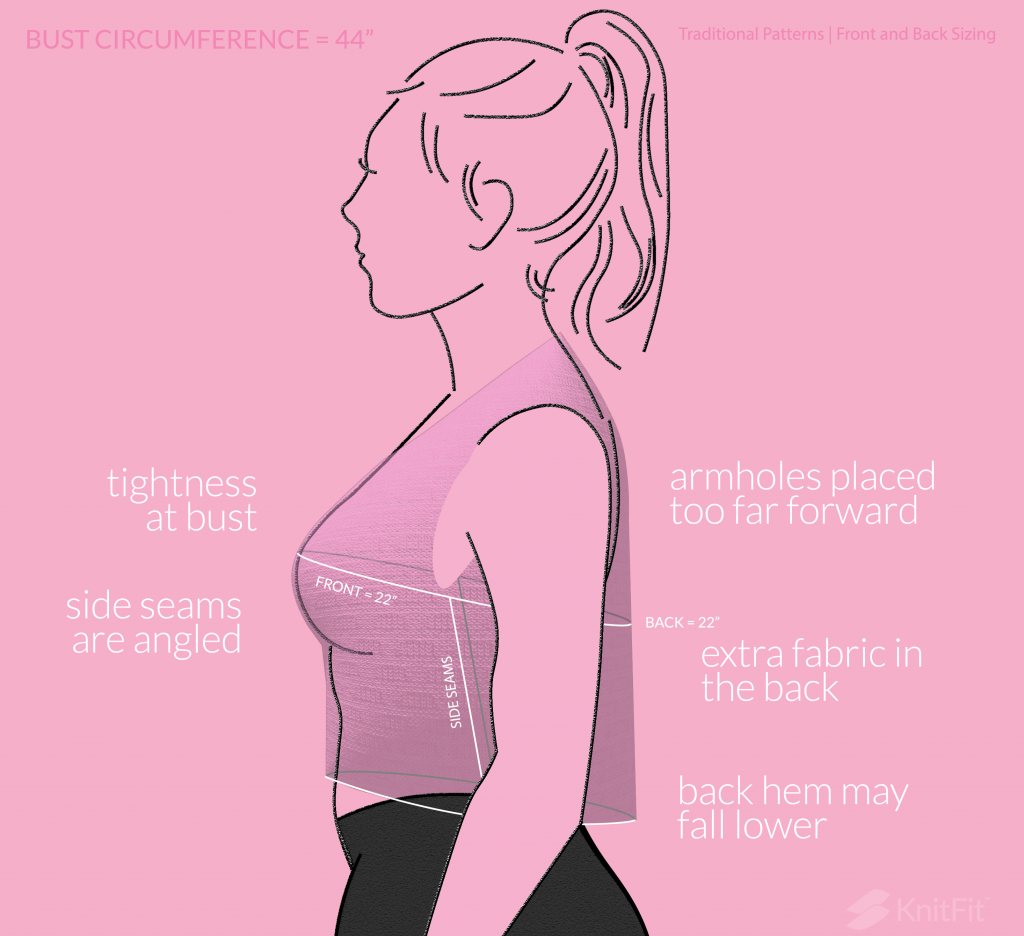
Subscribe to KnitFit™ Blog and advance your skills!
Why Do I Get an Awkward Fit Even When I Knit the Right Size?
So why do we get an inaccurate fit even when we knit the right size? This common fit problem occurs because traditional knitting patterns base sizing on the bust circumference, splitting that number it in half and allotting half of the fabric for the front and half for the back. This is the standard regardless of whether someone has a bust or tummy requiring more fabric coverage in the front.
For example, imagine you’re knitting a top for someone with a full bust of 44 inches. With a traditional pattern, the amount of fabric designated for the front of the bust will be half of that circumference (44/2 = 22) inches. The fabric designated for the back will also be 22 inches.
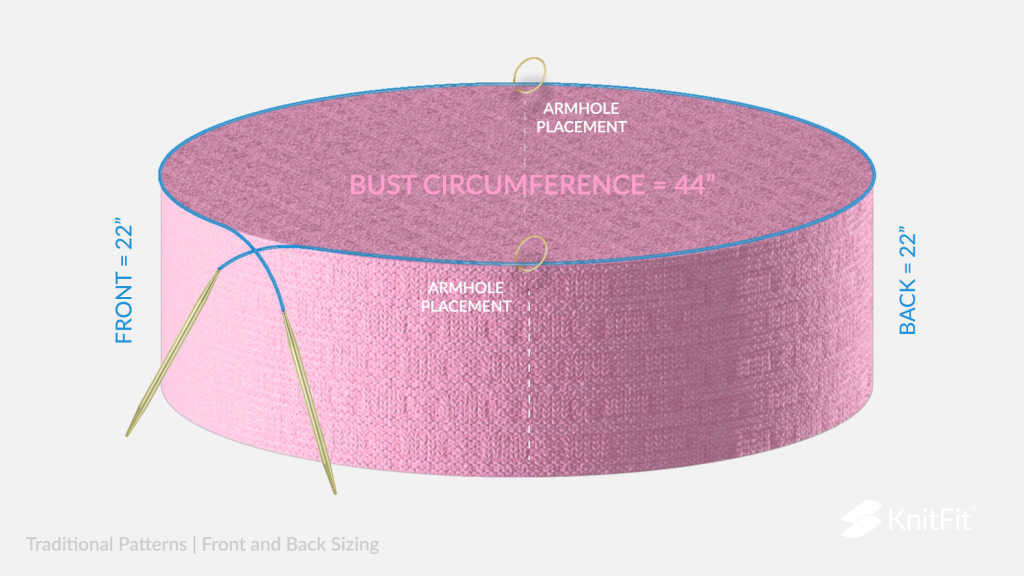
This might be fine if we didn’t have arms! But the armhole openings are generally positioned to separate the front and back sections. This can often give a tight fit in the front bust and underarm area, with extra fabric in the back.
For so many of us—and realistically for the majority of knitters—there’s simply more to cover in front than in back. It wouldn’t be unusual for someone with a 42 inch bust circumference to require 16 inches of fabric across the back, and 26 inches across the front. Even with this fairly common example, a full 1/3 of fabric is going to be in the wrong place for the wearer. That could easily create a very awkward fit for certain body types, which is just not fair after hours of skilled knitting.

Can Adding Ease Give Me a Better Fit?
If you’re lucky enough not to have encountered this problem, it’s either because you have a similar front and back bust measurement, or because traditional patterns often rely on ease in addition to the fact that knitting is inherently stretchy. Ease can in some cases alleviate the tight front but unfortunately it only exacerbates the issue as adding ease increases looseness in back. Ease is not effective even as a band-aid to the problem. We need to think about front and back measurements separately, and stop assuming they are equal measurements for anyone. Through advances in modern knitting, we can now get a personalized fit for people of all sizes and shapes.
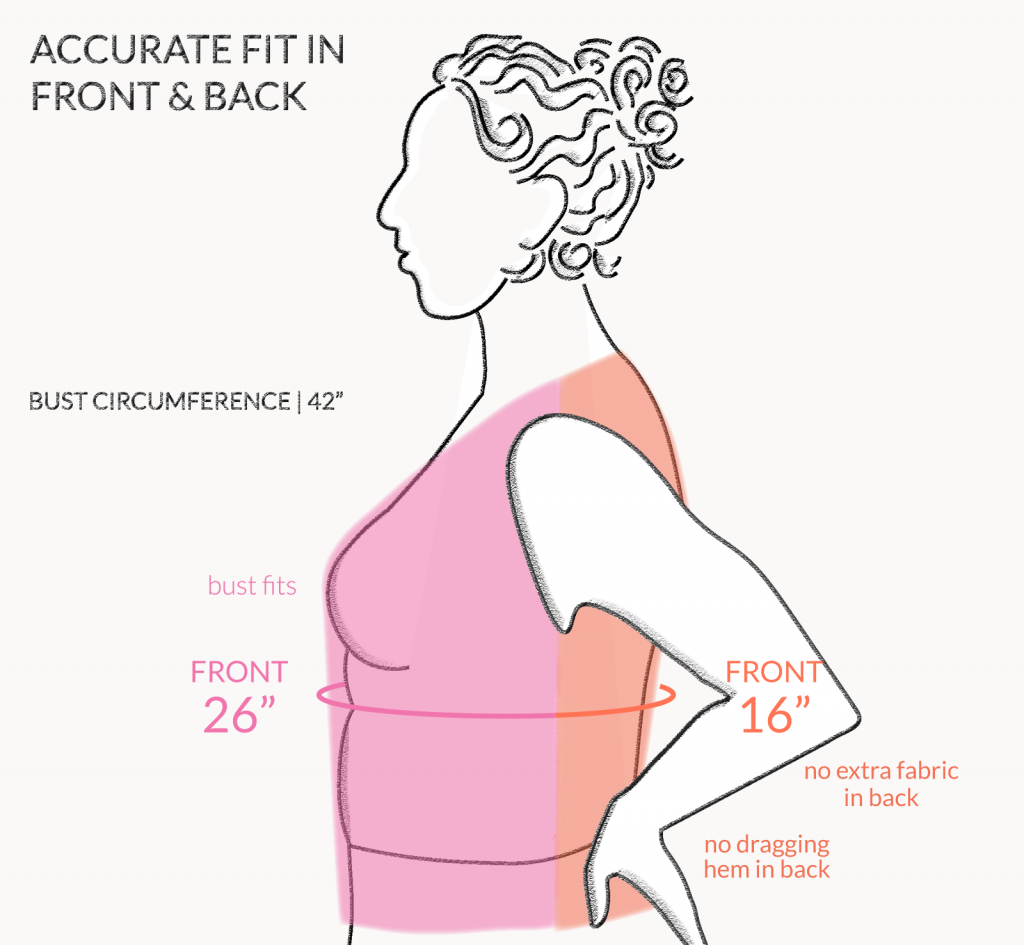
The Advantages of Back and Front Measurements
It’s time to knit sweaters that fit accurately in front and back.
When we separate the front and back measurements, we can end up with the correct amount of fabric in the front and the back and armholes that are positioned correctly because of this. This alleviates tightness in the front, looseness in the back, and awkward fit in the armholes. The finished object will be personalized to fit you or the person you knit it for, so that your hard work is comfortable as well as visually appealing, and it actually gets worn. Adding this fit skill to your knitting repertoire takes no extra work, in fact the pattern generator in KnitFit™ does this step automatically for all custom-sized patterns.
How to Get an Accurate Fit in Front and Back
This is so easy now because of technology. When generating a custom-sized pattern, the KnitFit™ Pattern Generator creates a pattern for you based on your measurement profile, or that of the person for whom you are knitting. When the pattern generator references your measurement profile, it automatically calculates the amount of stitches needed at front and back separately instead of assuming them to be equal.
What Types of Patterns Can I Knit for a Better Fit in Front and Back?
All the custom patterns available in the app will benefit from this feature automatically. Your pattern may be knit in the round, knit flat, bottom up, raglan, it doesn’t matter—you’ll knit it just like you always do, but the resulting garment will give you an accurate fit in front and back.
When you add shaping options (subtle shaping or full shaping) to your pattern, this can affect how the front/back measurements are calculated, but these calculations are optimized to give the most accurate fit. Through KnitFit’s test knitting of custom patterns, the technology has developed to personalize front and back measurements in accordance with your shaping choices to give us sweaters that fit how we want them to. To learn more about your options when it comes to shaping, click below.
BASICS OF SHAPING

“When you knit your own clothes, you should be able to choose the fit you want.”
Using Back and Front Shaping to Knit Better Fitting Garments
Knitters have born the brunt of the complicated math it requires to modify patterns to get a better fit, but the technology and support is now here to relieve them of the task. Now that you understand the limitations of the traditional means of calculating how much fabric will appear on front and back, you don’t need modifications. Custom-sized and shaped patterns are easy to create for you and anyone you knit by simply using an app on your mobile device or desktop. If you learned something from this post, please help spread the word so we can all get a personalized fit that we love!
Ready for more ways to optimize the shaping of your hand knit garments? Try these posts to learn more fit skills!
Start with these articles to learn how you can apply the shaping and sizing tools available in the KnitFit™ app! And don’t forget, you can always try these tools FREE on the app at any time.
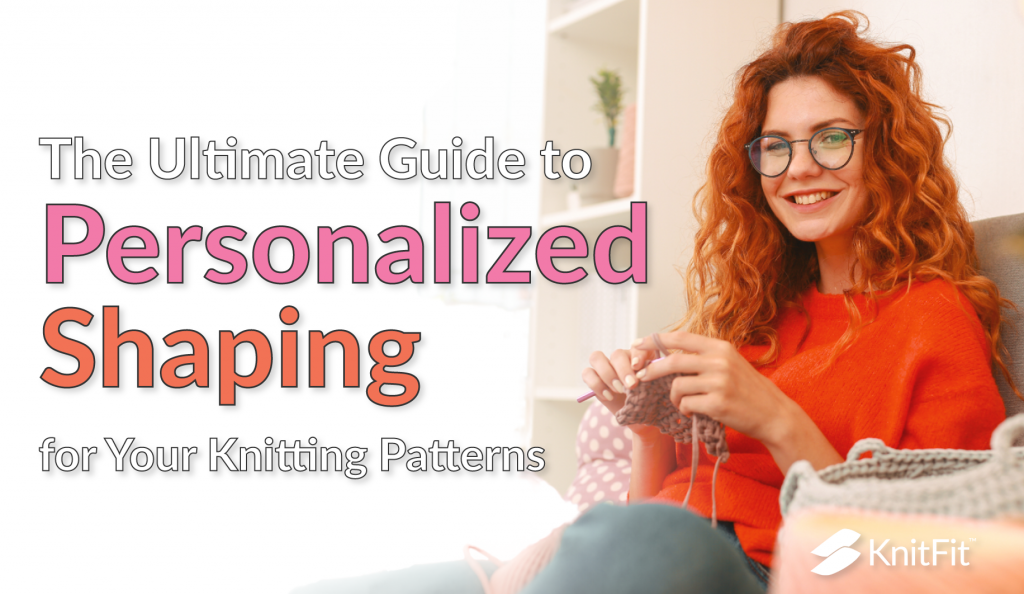
Improve accuracy of sizing in your project even further—learn to incorporate shaping into KnitFit™ custom pattern generation.
The Ultimate Guide to Personalized Shaping for Your Knitting Patterns
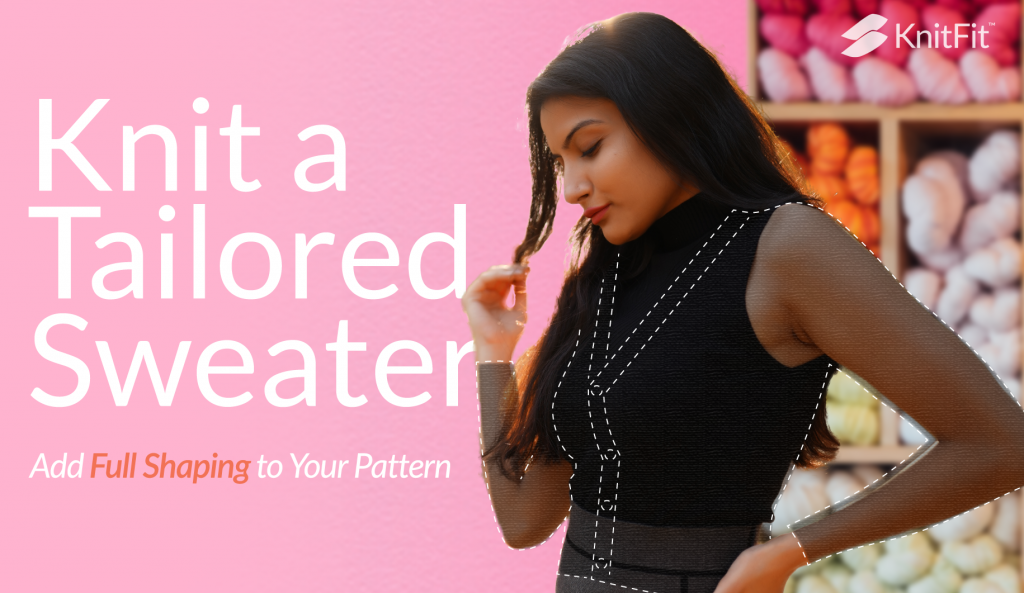
Harness the power of tailoring in your knitted garment using Full Shaping with KnitFit™ custom pattern generation.
Knit a Tailored Sweater: Add Full Shaping to Your Pattern
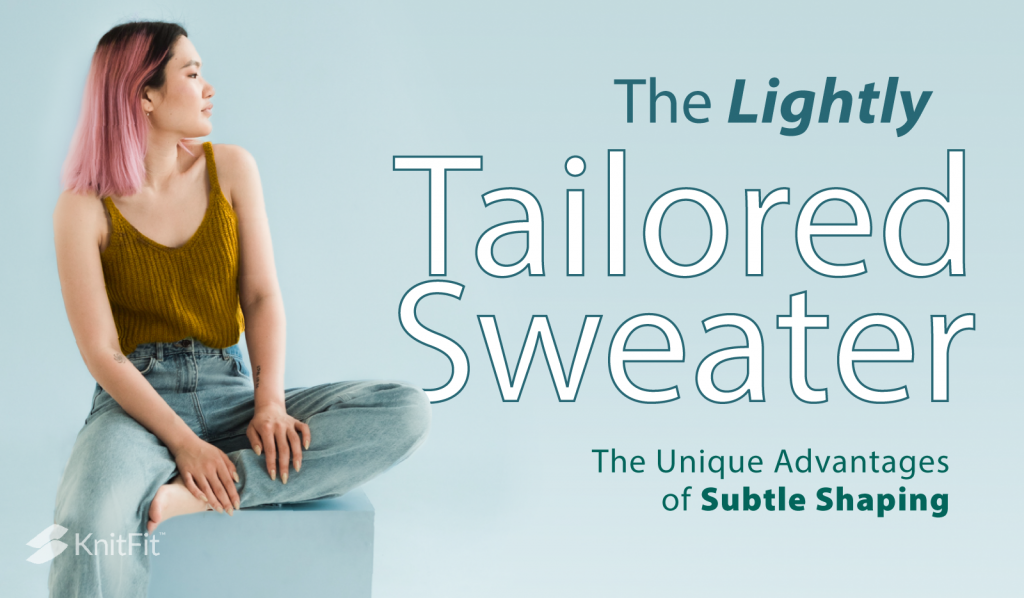
Subtle Shaping follows your curves, but without the fully tailored look. Learn to use shaping in small ways for big results!
The Lightly Tailored Sweater: the Unique Advantages of Subtle Shaping
Learn more skills for getting a great fit in your hand-knits: Subscribe to KnitFit™ Blog!
